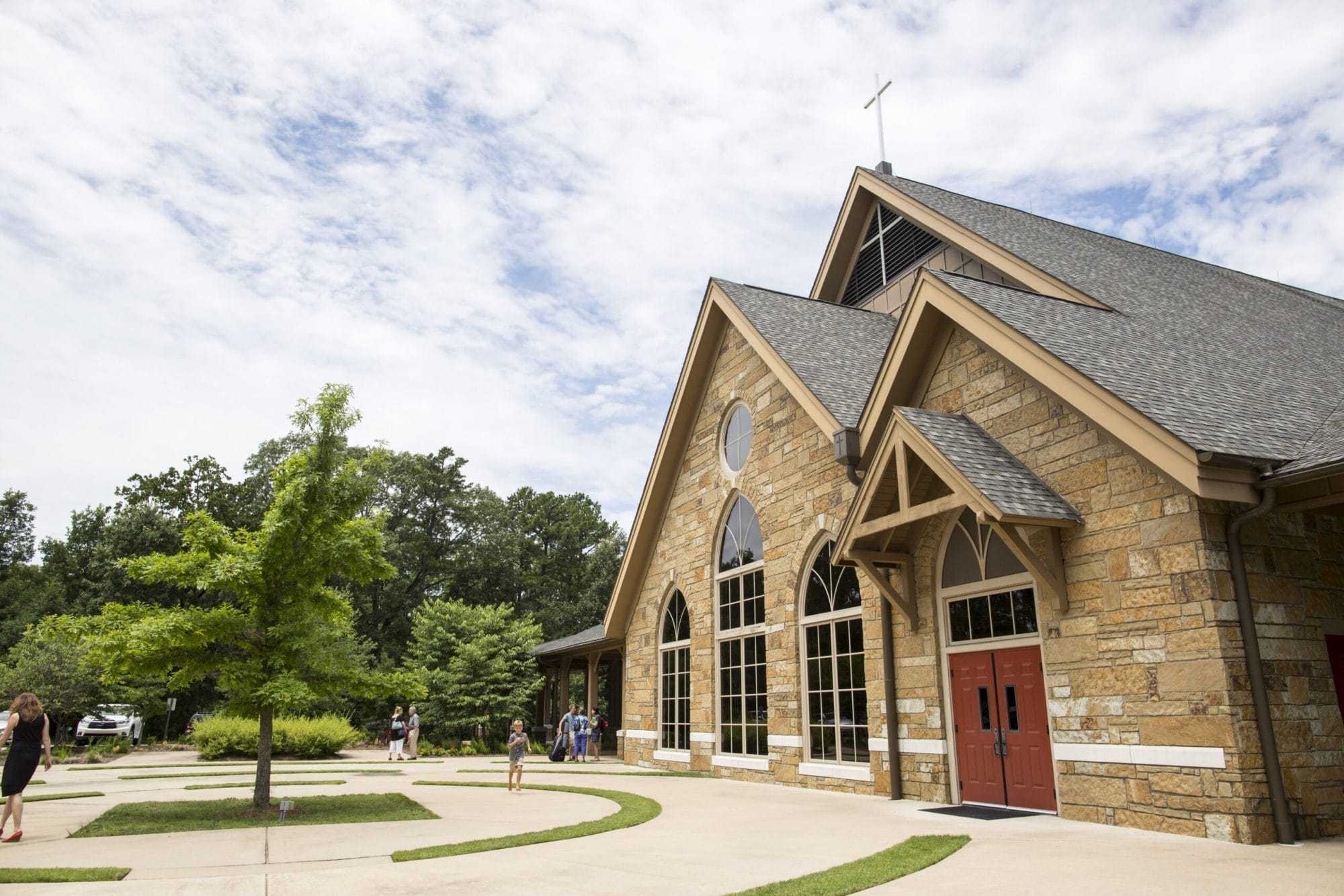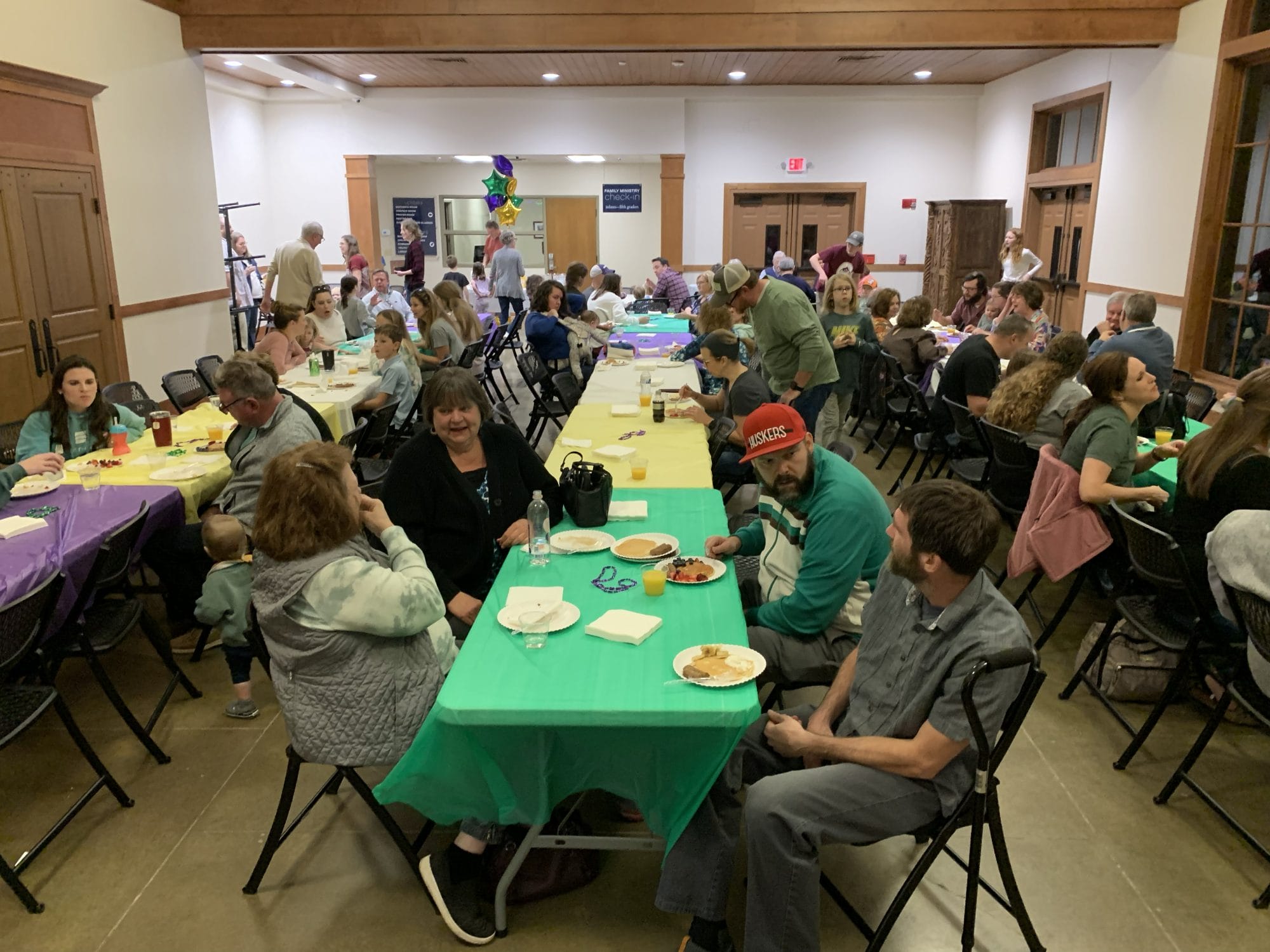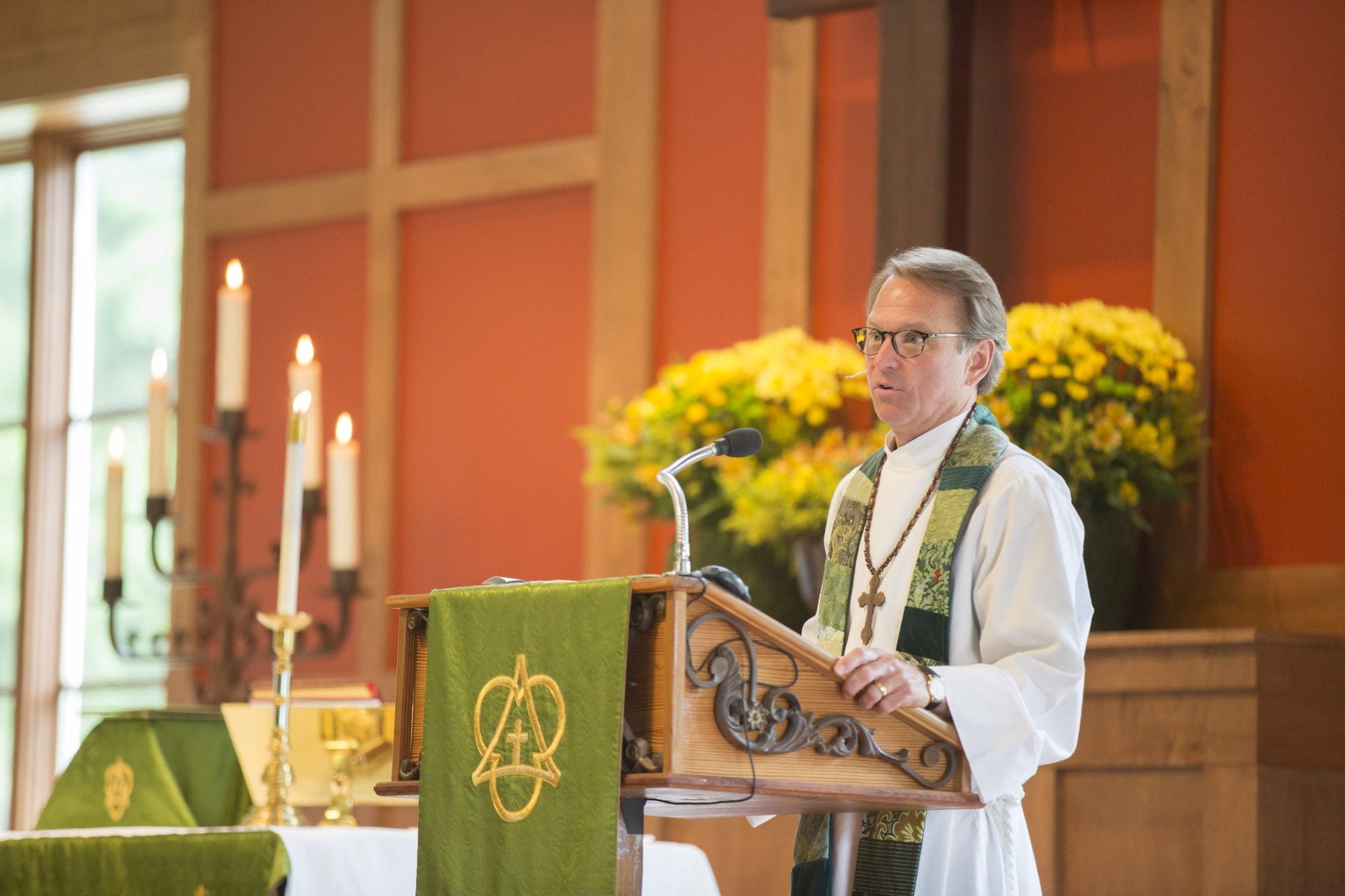Rhythms That Shape & Form Us
The story of St. Andrew’s Anglican Church began in February 1996 when a group of fifteen people started exploring the idea of planting a new church in Little Rock. The group met in homes to pray, seek the Scripture, and get clarity on whether a new church was where God was leading them. In the coming months, it became clear that their desire to start an evangelical, liturgical expression of the church where people experienced the power of the Holy Spirit in worship and ministry was, in fact, part of God’s plan.
At the time, the Episcopal Church USA (the denomination this group was a part of) was fracturing, and many were dissatisfied with where the denomination was headed. It was out of this denominational upheaval that the first Anglican Church was planted in America. Robert Cook, the church’s rector, explains how this happened. “Before 1996, there were no Anglican churches in America. They were all Episcopal churches. The Episcopal Church is linked with the Church of England, and in England, the churches are called Anglican. But when the settlers came over and began to colonize this country, they used the word ‘Episcopal’ instead of ‘Anglican.’ The denomination that was formed to bring other Anglican churches in [after St. Andrew’s was planted] was called the Anglican Mission in America.” In the years that followed, this small church became the center of a network of Anglican churches across the United States.

Two Distinctives — Order and Connection
I was completely ignorant of this important event in church history that happened right here in the Natural State before my conversation with Cook. Admittedly, there’s a lot about the Anglican Church that I don’t know. So I ask Rector Cook to give me a peek behind the curtain and share with me some of the distinctives you will find in an Anglican church like St. Andrew’s.
“When I think of distinctives in the Anglican Church, I think of two words: order and connection. Order comes from the liturgy that we follow. Most of our liturgy comes from the Book of Common Prayer. But it’s structured in a way that we’re not bound to say every prayer or follow every part. We’ve recrafted a few things, but by in large, Anglicans are following the same prayers, creeds, and communion liturgy around the world every Sunday.”
[The idea around liturgy is that there is] greater order and structure to our lives as we follow Jesus. All throughout our worship service, we are highlighting the cross and the gospel. The gospel is lifted up in our prayers. In communion, the cross is lifted up. We’re always pointing people back to the cross. That shapes our lives every day. That our lives would be shaped around the cross of Jesus. As he lived, we want to order our lives around him, and we want our lives to look more like him.”
“While every church has a liturgy, ours is very intentional. It is there to help form and shape our lives. It’s not just something we do by rote. Liturgy includes all the different parts of the service, from the worship music to the opening prayers to confession to the creeds, communion, and the sermon. Hopefully, the different rhythms of the service help shape and form our lives on Sunday and in what I like to call the in-between days.”
The other distinctive is connection. St. Andrews is not just a stand-alone church. We’re part of a larger group of churches. While our denomination is small here in America, we’re connected to bishops across the globe in places like Africa and Asia. We pray for each other. We encourage each other. We support each other financially. We’re about God’s kingdom work in intentional ways around the world.”
“Most Anglican churches are reading from the same passages and prayers, which gives a sense of unity among the capital ‘C’ Church. It helps us feel more connected to what God is doing around the world as opposed to our one little church. There’s a greater connection to God’s movement in the world as we see his kingdom come in greater ways.”

A Longing for Transcendence
I wonder out loud what a worship service might feel like at St. Andrews, to which Cook tells me, “You might think a service with liturgy and hymns would be stuffy, but it’s anything but that. One of the features of St. Andrews is that we are a Three Streams church. There are three life-giving streams that we drink from (1) Scripture, (2) sacrament (communion, baptism), and (3) the Spirit. We are grounded in the Scriptures. We recognize the sacraments of bread and wine. They are ordinary, but they are set apart, they are holy for God’s use. We recognize the same in our own lives. We’re ordinary people, but as Christians, we’re set apart. We’ve been marked and set apart for a holy purpose. So we see holiness in things. We are also charismatic, so we believe in all the gifts of the Holy Spirit. You won’t see people speaking in tongues, but you will sense a real freedom and moving of the Spirit in the service. There’s a deep sense of the Holy Spirit’s presence when you come in. We recognize the presence of the Spirit to open us up to the Scriptures and open us up to whatever work he wants to do in our lives.”
According to Cook, this more formal approach to worship helps “bring out more of the transcendence of God. That’s a longing of many, many people. They want to see the transcendence. There’s a depth of worship that highlights the holiness of God and reverence toward him. In that, you feel the nearness of God.” And, apparently, this approach is attracting a younger generation as well. “We’ve got a lot of young people in our church—couples, families, single adults. It’s formal, but you’ll have people raising their hands in worship. In our service, we stand when we sing and kneel when we pray. They come forward for communion before the altar. We serve them communion, and they connect with Jesus in that moment. People can linger there if they want. Our service engages the whole of our bodies. We’re not just spectators watching. We’re engaged in the service. That’s who God is. He wants to engage with the whole of our lives.”
Working Toward Greater Community Impact
This spring, the church will be launching Alpha Marriage. “It’s a seven-week course helping couples identify and strengthen weaknesses, as well as areas where they can grow deeper. What’s unique about it is that it becomes a date night at St. Andrews. So we take our sanctuary and put tables for two all throughout it. We have people come and serve a home-cooked meal. There are a couple of short videos each time around on different topics, and there’s a workbook that couples work through, do exercises, etc. Couples that I’ve seen go through it have seen their marriages transformed. You know, they’ve become complacent in getting along, going along, but this sparks a new vision and fresh wind of falling in love again and walking together and having the church be a part of your lives in a greater way. It’s gospel-based, so you’re being brought back to Jesus and over again.”
One of the advantages that St. Andrew’s has in ministry is its location. “It’s in a transition neighborhood. South of us is more inner city. North of us is more upper, middle class. When they bought the property many years ago, they wanted the church to be open to everybody. They didn’t want it to be just a wealthy, white church. We’ve got people from the community that come every Sunday. We’ve got a ministry called GIG (Growing in Grace), and it’s a recovery ministry we have on Wednesday nights. We have vans that bring people in from recovery facilities. We serve them a meal and have breakout groups.”
The church is also engaged in a church/school partnership. “We’ve adopted Western Hills Elementary, an inner city school just south of us. We’ve got mentors there who tutor kids, sit with them at lunch, and do recreational stuff with them…all to build relationships.” Three times a year, the church also serves students, parents, and school staff through (1) a back-to-school carnival where students receive backpacks, uniforms, and school supplies, (2) a Christmas Blessing service open to all, and (3) end of the school year festival with games and a bazaar. “We’re trying to have that connection. We, like a lot of churches, want to see how we can have a greater impact in the community where we are. We have a lot to learn and grow in that area but I love the things we have going on right now.”
Together on Mission
Before we end the conversation, I ask Rector Cook, “Why do you think it is important for churches to work together for the flourishing of our community?” Cook thinks for a minute and says, “It’s crucial. The kingdom of God breaking in this world. We shouldn’t have barriers that can get in the way of that or say, ‘That’s my territory’ or ‘That’s yours.’ We should say, ‘We’re together on this mission to see the kingdom of God come in greater ways. I think it does become more powerful when we do lock arms with one another.”
We are thankful for the exceptional work of St. Andrew’s Anglican Church and all the churches in our city that are making real, life-changing connections with those in their communities for the sake of Christ and his kingdom. They’re helping the whole Church grow.
Speaking the truth in love, we will grow to become in every respect the mature body of him who is the head, that is, Christ. From him the whole body, joined and held together by every supporting ligament, grows and builds itself up in love, as each part does its work.
Ephesians 4:15-16
To learn more about St. Andrew’s, visit their website.


